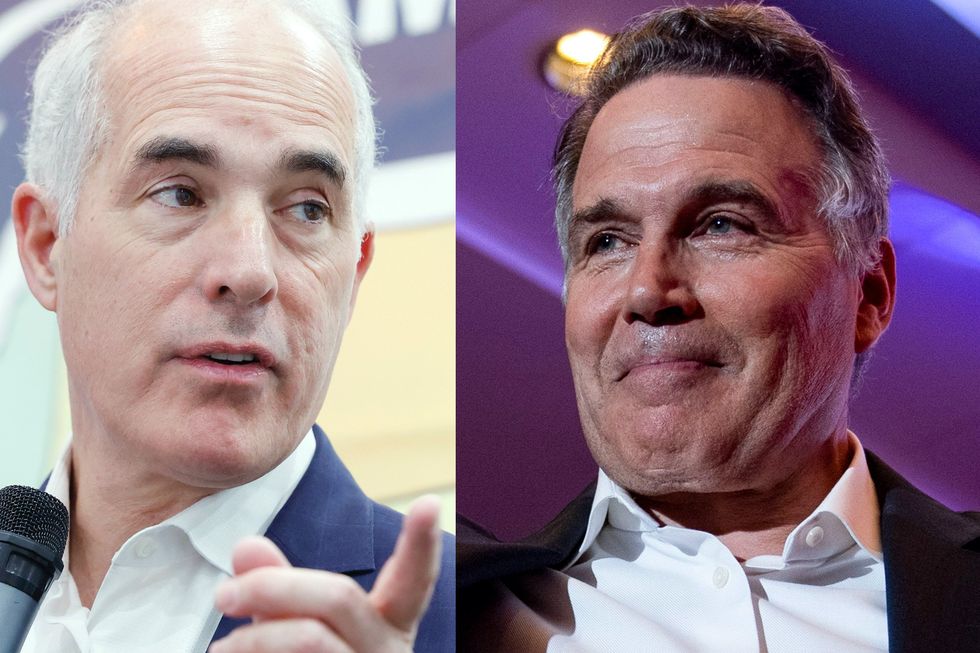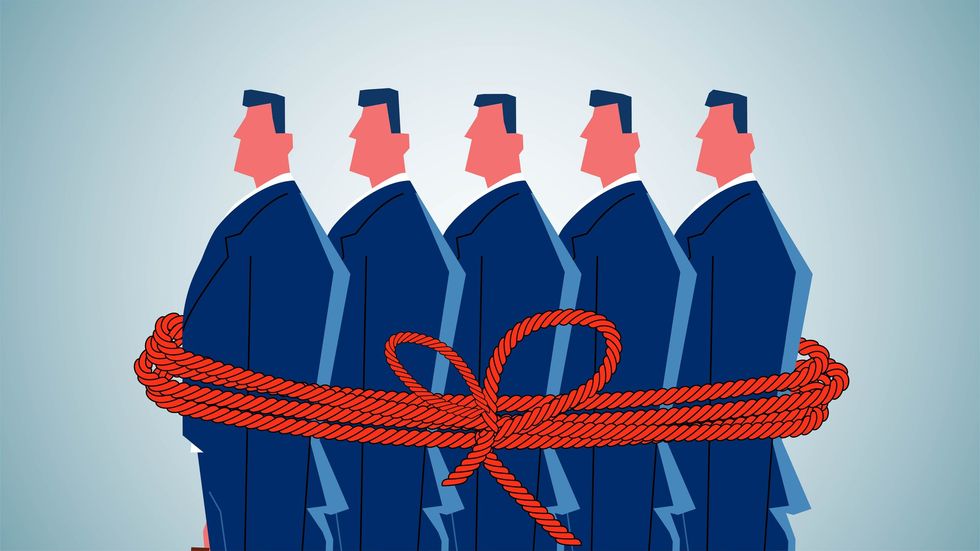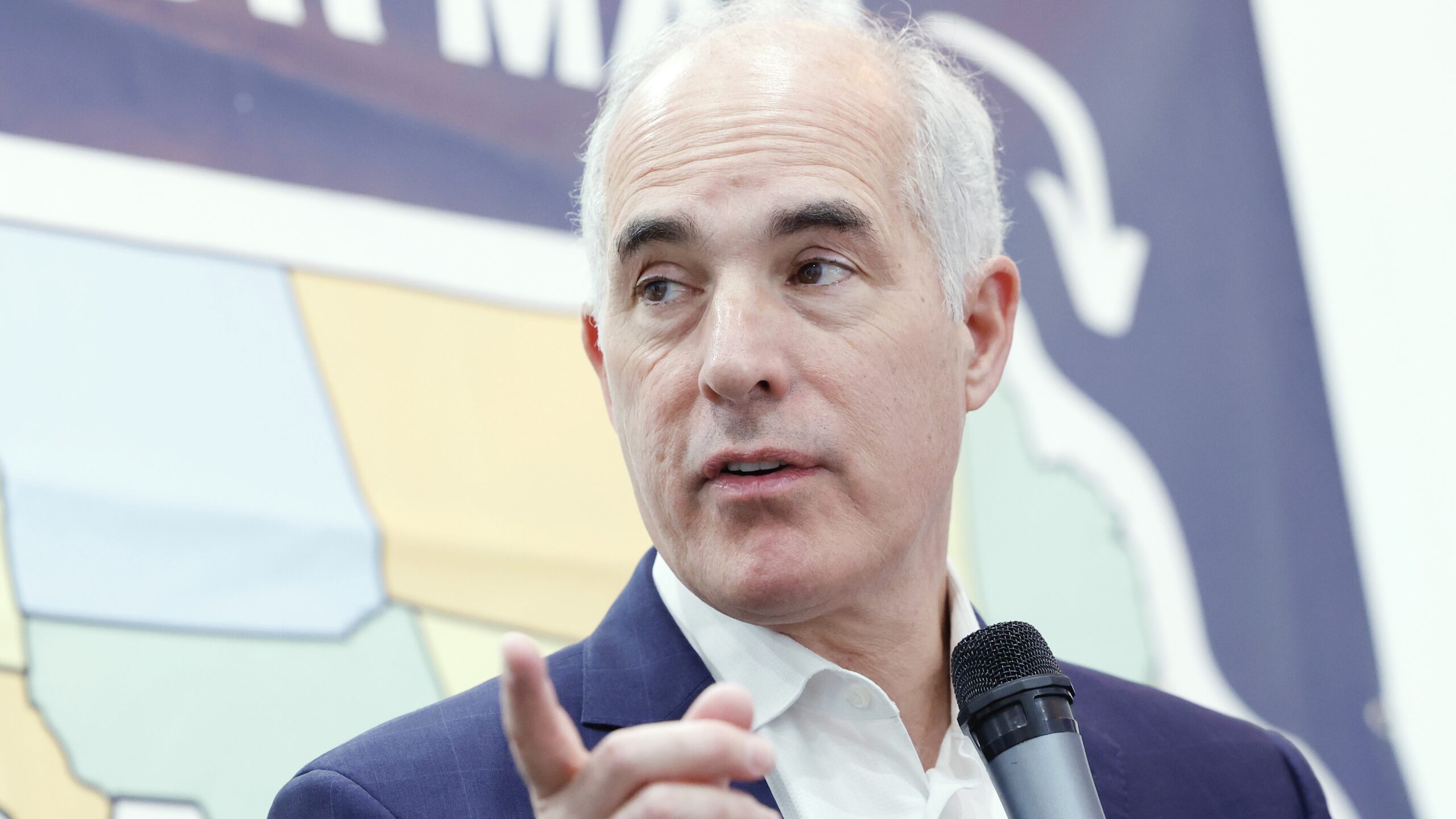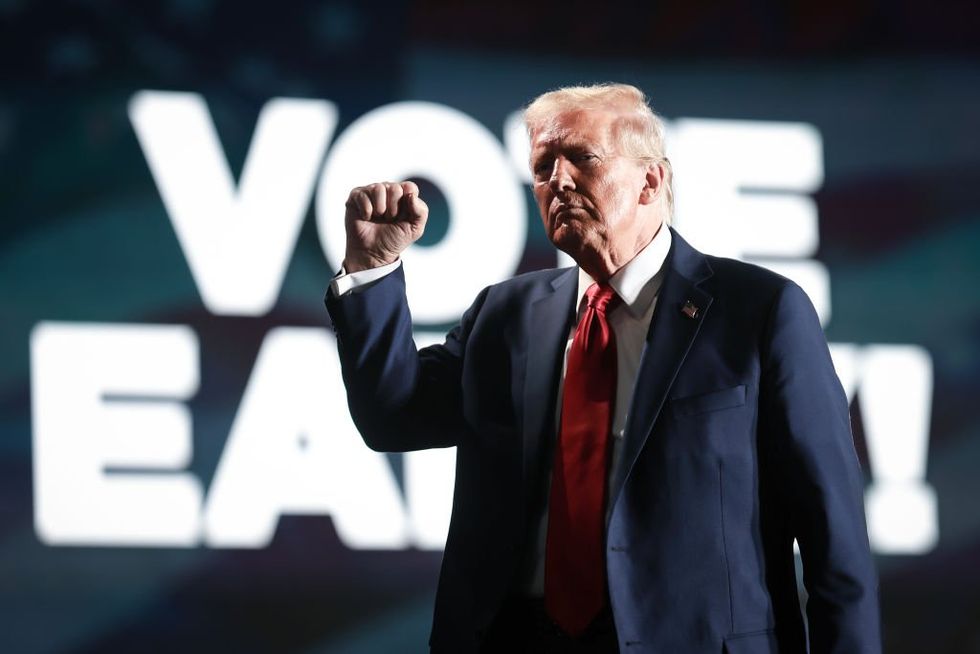Selling the new Kamala
The reintroduction of Kamala Harris, her transition from a nationally disliked vice president to a transformational political savior, has been truly remarkable. All it took was Democratic desperation at the prospect of Joe Biden running in 2024. Popularity is difficult to replicate. If you lived through the campaigns of Bill Clinton or Barack Obama and the excitement and buzz surrounding their respective messages, then you understand that Kamala isn’t like them. You get the feeling that part of Kamala’s 'joy' tagline is a way to explain the laughter, though it is painfully obvious that the laughter does not come from a place of joy. Both Clinton and Obama had “hope” and the promises of change. Kamala has “joy” and the continuation of an unpopular presidency. The packed house at the Democratic National Convention earlier this month doesn’t change things; it’s like the extravagant birthday party for the kid nobody likes. Large crowds of partisans don’t necessarily equal broader excitement, though you are asked to believe otherwise. It’s like saying flannel makes you a man of the people. The redefinition of Kamala Harris is not an easy task. She has adopted politically unpopular positions in the past, from supporting open borders to ending private health insurance and shutting down drilling and fracking. She is known, weighed down by the policies and mistakes of the Biden administration: inflation, lagging wages and a slowing labor market, the Afghanistan withdrawal, illegal immigration, the wars in Ukraine and Israel. She has zero significant achievements as vice president. Part of the difficulty in moving forward from Biden’s failures is the fact that Kamala struggles to define herself apart from the Biden administration. The campaign’s official website still doesn’t address her positions on the issues. One reason for the silence is political calculation, the thought that the less she says about the issues, the more she can campaign on platitudes: diversity and liberalism, freedom, democracy, whatever. It took weeks for her to speak on the economy, and when she did it was proposals for more spending and modest tax cuts, with inflationary down-payment assistance (and she doesn’t know who will foot that bill), all while blaming businesses for inflation: “I know most businesses are creating jobs, contributing to our economy and playing by the rules, but some are not.” This leaves the public asking: What specifically is Kamala for, and what does support for Kamala mean? You might know the answers if you’re informed, if only based on her history. According to The Hill: “Based on her roll call voting record, Harris is the second-most liberal Democratic senator to serve in the Senate in the 21st century.” The average voter has much more difficulty in deciphering Kamala. They’ll have to vote to find out. Kamala must be sold, and the media will do the heavy lifting. Dare we state the obvious? Their favorable coverage of the Democratic nominee is a campaign for the Democratic nominee. The New York Times reports that “Joy Is Fueling Her Campaign.” Says who? The Kamala campaign. You’d think the media might want an objective source on that. Are we to believe the campaign is not fueled by the desire for power? The fuel — what allows the campaign to go forward — isn’t millions of dollars in donations by corporations and special interests? After her appearance at the DNC, the media gushed about Kamala’s choice of fashion: “A tan suit!” shrieked one New York Times writer. Axios is defending Kamala’s plan to stop "price-gouging" at grocery stores — her attempt to deflect the causes of the Biden-Harris inflation — and reminding its readers that “Harris’ economic proposals, broadly speaking, are meant to help middle-class Americans deal with a higher cost of living.” To that we ask: What policies?? Forget any analysis of why the middle-class is struggling or a discussion of the root causes of inflation. Voters don’t need to know. All the while, the media isn’t pushing back on Kamala’s refusal to sit for interviews or take questions. It seems Kamala’s campaign and the media have the same strategy: Keep the public uninformed, lest they find out just who Harris and Walz really are. But try as they might, her history will be known and the more radical parts of Kamala’s agenda will come out, no matter her attempts to moderate. Price controls are just the start. There is also her support for taxation on unrealized gains — the profits that a person has yet to realize. This plan “calls for the creation of an annual 25% minimum tax on the unrealized gains of individuals with income and assets that exceed $100 million.” This is a “radical departure” from the norm that subjects Americans to arbitrary valuations on arbitrary dates and imposes “double and triple taxation.” Once adopted, it is likely that it will apply to us all. Nobody will be safe; the government can’t constrain itself. Good luck with
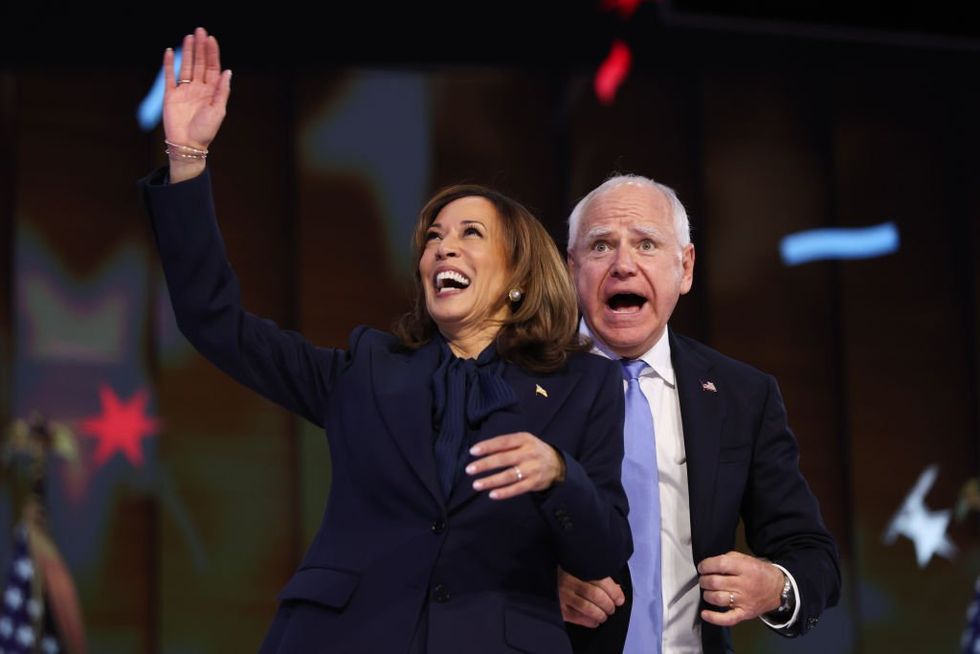

The reintroduction of Kamala Harris, her transition from a nationally disliked vice president to a transformational political savior, has been truly remarkable. All it took was Democratic desperation at the prospect of Joe Biden running in 2024.
Popularity is difficult to replicate. If you lived through the campaigns of Bill Clinton or Barack Obama and the excitement and buzz surrounding their respective messages, then you understand that Kamala isn’t like them.
You get the feeling that part of Kamala’s 'joy' tagline is a way to explain the laughter, though it is painfully obvious that the laughter does not come from a place of joy.
Both Clinton and Obama had “hope” and the promises of change. Kamala has “joy” and the continuation of an unpopular presidency. The packed house at the Democratic National Convention earlier this month doesn’t change things; it’s like the extravagant birthday party for the kid nobody likes. Large crowds of partisans don’t necessarily equal broader excitement, though you are asked to believe otherwise. It’s like saying flannel makes you a man of the people.
The redefinition of Kamala Harris is not an easy task. She has adopted politically unpopular positions in the past, from supporting open borders to ending private health insurance and shutting down drilling and fracking.
She is known, weighed down by the policies and mistakes of the Biden administration: inflation, lagging wages and a slowing labor market, the Afghanistan withdrawal, illegal immigration, the wars in Ukraine and Israel. She has zero significant achievements as vice president.
Part of the difficulty in moving forward from Biden’s failures is the fact that Kamala struggles to define herself apart from the Biden administration. The campaign’s official website still doesn’t address her positions on the issues.
One reason for the silence is political calculation, the thought that the less she says about the issues, the more she can campaign on platitudes: diversity and liberalism, freedom, democracy, whatever.
It took weeks for her to speak on the economy, and when she did it was proposals for more spending and modest tax cuts, with inflationary down-payment assistance (and she doesn’t know who will foot that bill), all while blaming businesses for inflation: “I know most businesses are creating jobs, contributing to our economy and playing by the rules, but some are not.”
This leaves the public asking: What specifically is Kamala for, and what does support for Kamala mean?
You might know the answers if you’re informed, if only based on her history. According to The Hill: “Based on her roll call voting record, Harris is the second-most liberal Democratic senator to serve in the Senate in the 21st century.” The average voter has much more difficulty in deciphering Kamala. They’ll have to vote to find out.
Kamala must be sold, and the media will do the heavy lifting. Dare we state the obvious? Their favorable coverage of the Democratic nominee is a campaign for the Democratic nominee.
The New York Times reports that “Joy Is Fueling Her Campaign.” Says who? The Kamala campaign. You’d think the media might want an objective source on that.
Are we to believe the campaign is not fueled by the desire for power? The fuel — what allows the campaign to go forward — isn’t millions of dollars in donations by corporations and special interests?
After her appearance at the DNC, the media gushed about Kamala’s choice of fashion: “A tan suit!” shrieked one New York Times writer.
Axios is defending Kamala’s plan to stop "price-gouging" at grocery stores — her attempt to deflect the causes of the Biden-Harris inflation — and reminding its readers that “Harris’ economic proposals, broadly speaking, are meant to help middle-class Americans deal with a higher cost of living.”
To that we ask: What policies?? Forget any analysis of why the middle-class is struggling or a discussion of the root causes of inflation. Voters don’t need to know.
All the while, the media isn’t pushing back on Kamala’s refusal to sit for interviews or take questions. It seems Kamala’s campaign and the media have the same strategy: Keep the public uninformed, lest they find out just who Harris and Walz really are.
But try as they might, her history will be known and the more radical parts of Kamala’s agenda will come out, no matter her attempts to moderate. Price controls are just the start.
There is also her support for taxation on unrealized gains — the profits that a person has yet to realize. This plan “calls for the creation of an annual 25% minimum tax on the unrealized gains of individuals with income and assets that exceed $100 million.”
This is a “radical departure” from the norm that subjects Americans to arbitrary valuations on arbitrary dates and imposes “double and triple taxation.” Once adopted, it is likely that it will apply to us all. Nobody will be safe; the government can’t constrain itself. Good luck with your 401(k) or your Schwab account or your home.
Can Kamala shake her liberal past, the statements she made in the 2020 race (supporting a fracking ban, for starters), her responsibilities as VP for the border, and the failures of the Biden administration?
Consider that Kamala doesn’t have the confidence to step out and establish who she is and what she believes. She lacks boldness — especially in comparison to her predecessors, evidenced by agreeing to only one debate despite the close race. But she also lacks something else: authenticity.
The proposals she previously advocated are disclaimed today. The central message of her campaign — aside from running against Trump — is lacking, perhaps because she is insecure in her own skin, anxious to the point of needing untimely and inauthentic laughter to ease her tension. You get the feeling that part of Kamala’s “joy” tagline is a way to explain the laughter, though it is painfully obvious that the laughter does not come from a place of joy.
The insecurity explains what might be her biggest mistake thus far: the choice of Tim Walz as vice president. She needs a follower because she isn’t a leader.
Kamala, the reluctant choice of the Democratic establishment, couldn’t afford to be upstaged by Pennsylvania Governor Josh Shapiro or California Governor Gavin Newsom. Whatever their problems might be (and they are many), their intangibles far outweigh hers. Shapiro could have delivered Pennsylvania, but Walz is the true subordinate, one without aspirations beyond the vice presidency. He isn’t Kamala’s replacement or her competitor.
Instead, Walz is happy to play the minstrel, the cartoon of a white rural Midwesterner sold to suburbanites (credit to Walter Kirn for that one, I think). He’ll serve as the phony soldier, both literally and figuratively, in the phoniest campaign in recent history.
Editor's note: A version of this essay originally appeared at the Reactionary.
Originally Published at Daily Wire, World Net Daily, or The Blaze
What's Your Reaction?
















